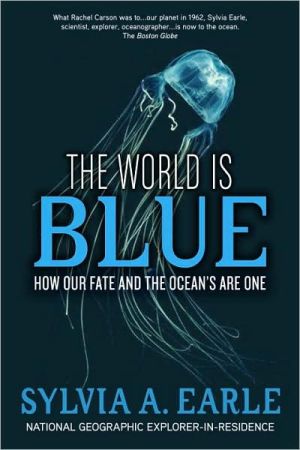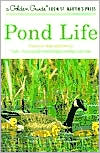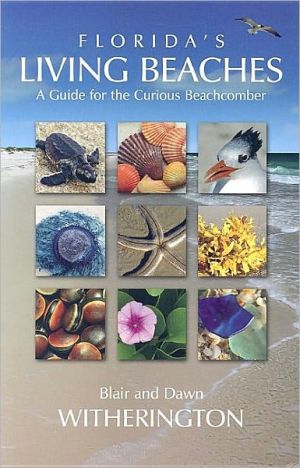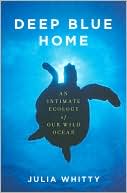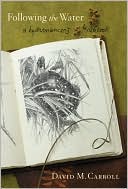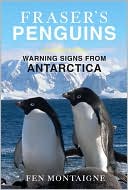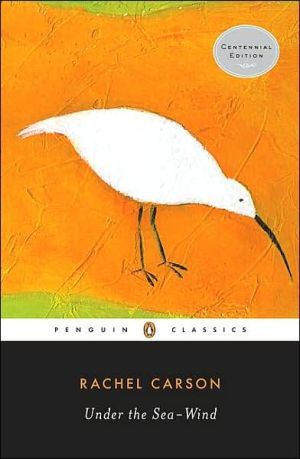Lost Woods: The Discovered Writing of Rachel Carson
When Rachel Carson died of cancer in 1964, her four books, including the environmental classic Silent Spring, had made her one of the most famous people in America. This trove of previously uncollected writings is a priceless addition to our knowledge of Rachel Carson, her affinity with the natural world, and her life.
Search in google:
Edited and with an Introduction by Linda LearThis trove of previously uncollected writings by the author of Silent Spring is a priceless addition to our knowledge of the great environmentalist and her life. "[Carson's] writing still sparkles. . . . This book should be required reading." -Bill Sharp, The New York Times Book Review School Library Journal YA-These brief excerpts from previously unpublished or uncollected writings provide YAs with samples of some of the most lyrical, clear scientific writing available in the fields of biology, ecology, and wildlife and wilderness conservation. A number of the excerpts included are from speeches Carson made before groups such as the Women's National Press Club. Each selection, whether letter, speech, or article, is preceded by a brief introduction that gives useful background information. The naturalist's struggle for financial security, her devotion to her work, and her fascination with the natural world are revealed both in her writing and in the editor's introductions. Lear also provides updates to Carson's writing where necessary, since much of this work was produced in the 1950s. Carson's call for wildlife conservation and preservation, her warnings about the dangers of pesticides, and about the need to preserve and protect our natural resources, however, are timeless.-Molly Connally, Kings Park Library, Fairfax County, VA
Introduction1Undersea32My Favorite Recreation123Fight for Wildlife Pushes Ahead/Chesapeake Eels Seek the Sargasso Sea144Ace of Nature's Aviators245Road of the Hawks306An Island I Remember337Mattamuskeet: A National Wildlife Refuge418Memo to Mrs. Eales on Under the Sea-Wind539Lost Worlds: The Challenge of the Islands6310New York Herald-Tribune Book and Author Luncheon Speech7611Jacket Notes for the RCA Victor Recording of Claude Debussy's La Mer/National Symphony Orchestra Speech8312Remarks at the Acceptance of the National Book Award for Nonfiction9013Design for Nature Writing9314Mr. Day's Dismissal9815Preface to the Second Edition of The Sea Around Us10116Our Ever-Changing Shore11317Four Fragments from Carson's Field Notebooks12518The Edge of the Sea13319The Real World Around Us14720Biological Sciences16421Two letters to Dorothy and Stanley Freeman16822The Lost Woods. A Letter to Curtis and Nellie Lee Bok17223Clouds17524Vanishing Americans18925To Understand Biology/Preface to Animal Machines19226A Fable for Tomorrow19727Women's National Press Club Speech20128A New Chapter to Silent Spring21129Letter to Dr. George Crile, Jr.22330The Pollution of Our Environment22731Letter to Dorothy Freeman246Credits248Acknowledgments251Index254
\ School Library JournalYA-These brief excerpts from previously unpublished or uncollected writings provide YAs with samples of some of the most lyrical, clear scientific writing available in the fields of biology, ecology, and wildlife and wilderness conservation. A number of the excerpts included are from speeches Carson made before groups such as the Women's National Press Club. Each selection, whether letter, speech, or article, is preceded by a brief introduction that gives useful background information. The naturalist's struggle for financial security, her devotion to her work, and her fascination with the natural world are revealed both in her writing and in the editor's introductions. Lear also provides updates to Carson's writing where necessary, since much of this work was produced in the 1950s. Carson's call for wildlife conservation and preservation, her warnings about the dangers of pesticides, and about the need to preserve and protect our natural resources, however, are timeless.-Molly Connally, Kings Park Library, Fairfax County, VA\ \ \ \ \ BooknewsProvides a sense of Silent Spring (1962) author Rachel Carson's evolution as a writer and thinker through a presentation of some of her less-known writings including field notebook entries, letters, magazine articles, and a television script. Annotation c. by Book News, Inc., Portland, Or.\ \ \ Ann H. ZwingerThese resplendent essays, speeches,and responses show Rachel Carson's mind at its most cogent and creative. The charm and erudition of Lear's introductions are fitting companions to her marvelous selections of Carson's work. Lost Woods adds immeasurably to my understanding of the nature writer whose book I most admire. -- Author of The Mysterious Lands\ \ \ \ \ Bill Sharp....Linda Lear's collection of her essays does a superb job of pulling from Carson's works a collection that is lyric, descriptive, informative and moving. -- The New York Times Book Review\ \ \ \ \ Kirkus ReviewsBiographer Lear (Rachel Carson: Witness for Nature, 1997) knits together here a number of Rachel Carson's writings' often much more personal, quirky, and searching than her celebrated books—-that add meat to her body of literary/scientific writing. Carson published just four books during her lifetime, but she also cranked out speeches and articles and newspaper work, kept copious field notes, and wrote thousands of letters. Lear has selected from this material a chronological sampling as a guide to Carson's evolution as a writer and a natural scientist. Many of the pieces will be new to most readers, even if their tone—-of "awakening an emotional response to nature" is trademark Carson. This collection includes pieces on Carson the hard-core birder: there are both field jottings and essays on chimney swifts and warblers and gulls, and a rapt couple of days on a hawk watch in Pennsylvania. She wrote liner notes to Debussy's La Mer, music which she comfortably interprets to jibe with her notion of the ocean's mysteries. She was certainly one of the first to give the importance of island biogeography more than a passing nod; an essay on the destruction of rare island habitats, and the extinction of island species, has been included by Lear. And her anxiety over atomic weapons, especially when byproducts are dumped in the oceans, is spelled out here in her preface to the second edition of The Sea Around Us. As always, touching all aspects of her work are her puzzlings over the simple fact of life and her druidic appreciation of natural cycles and the beauty, excitement, and inscrutable elements of the natural world.\ \

